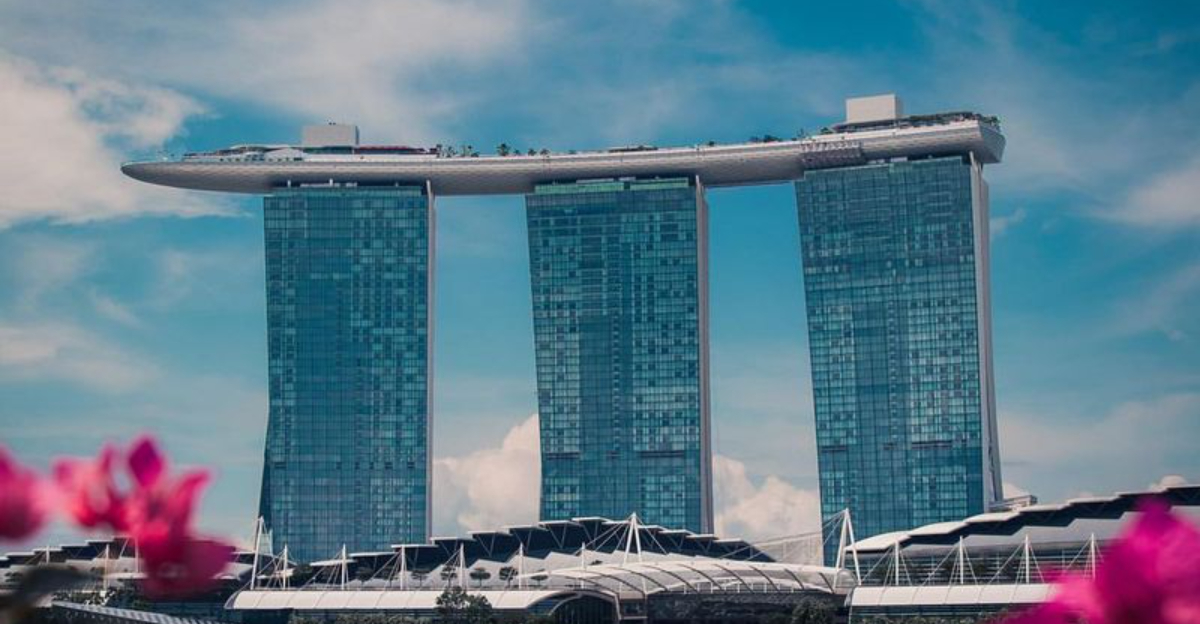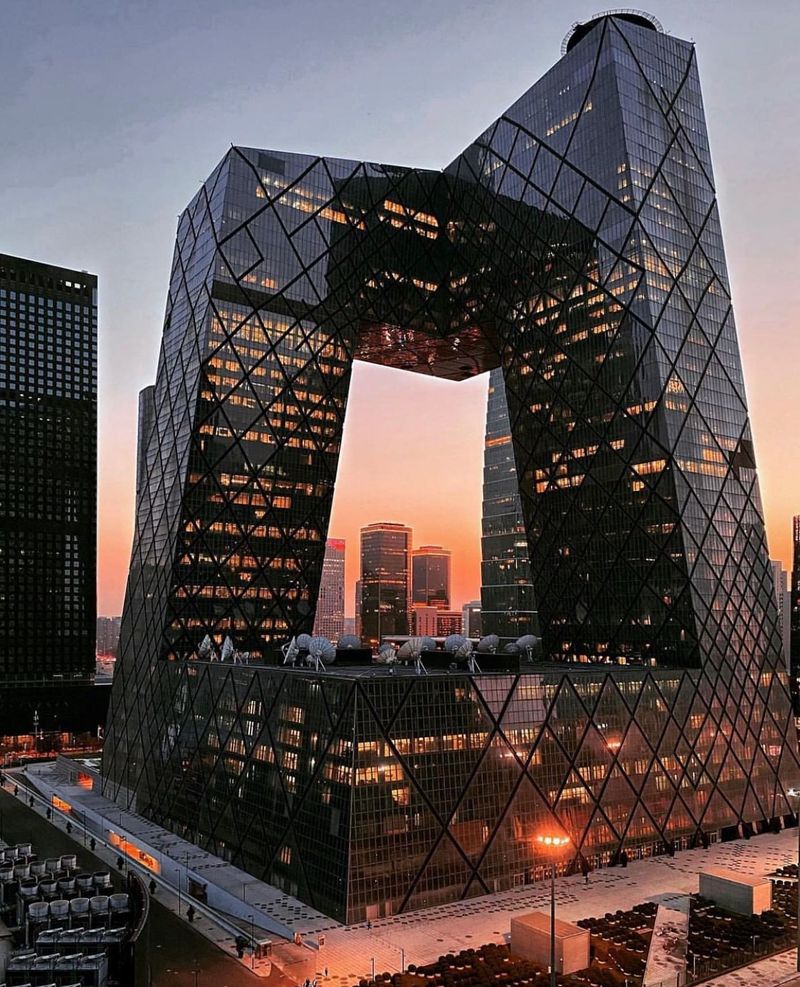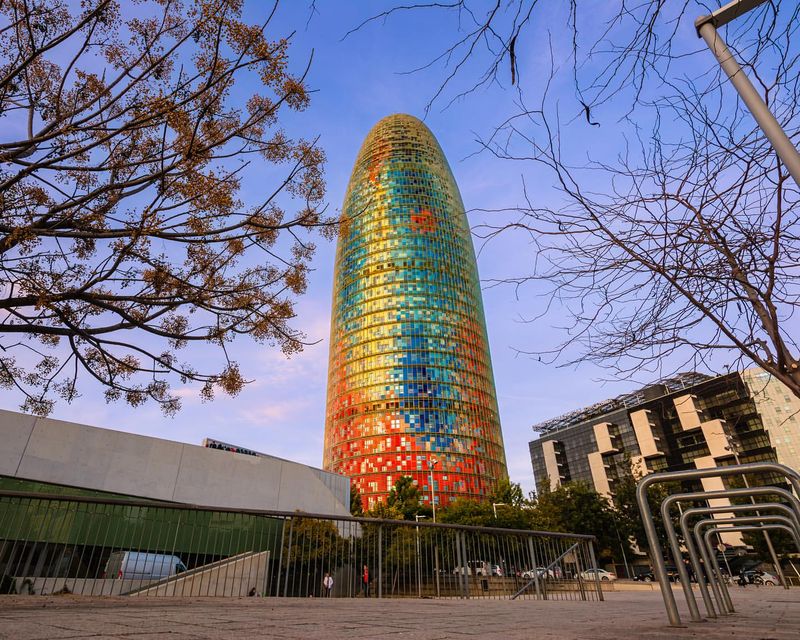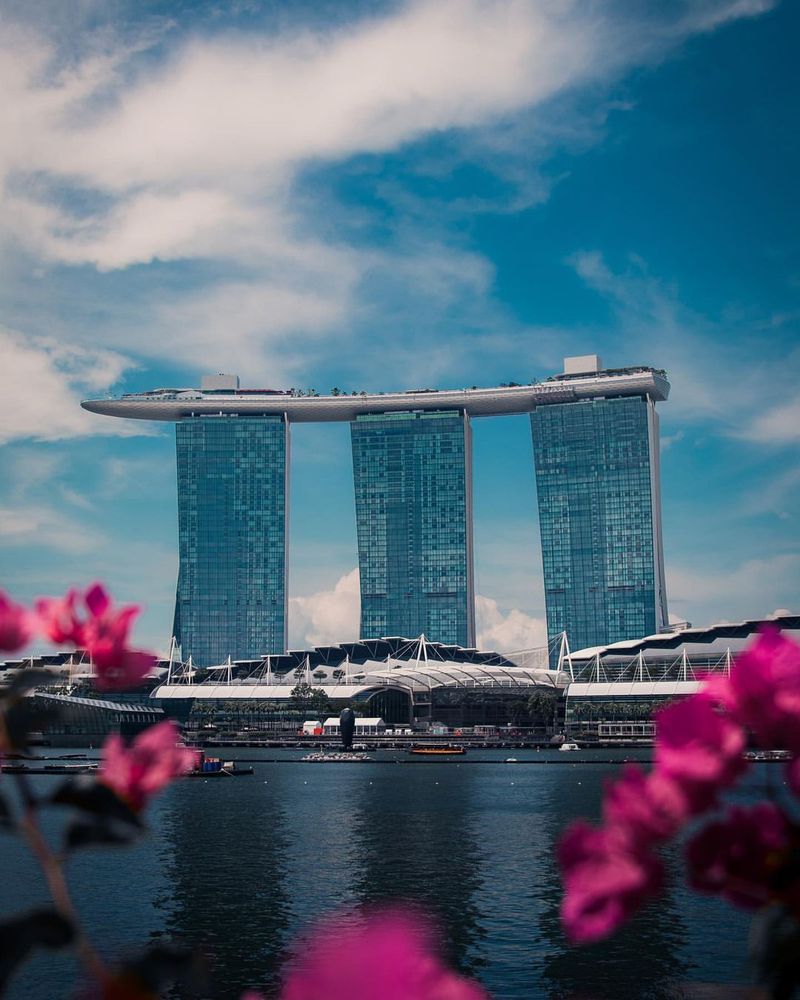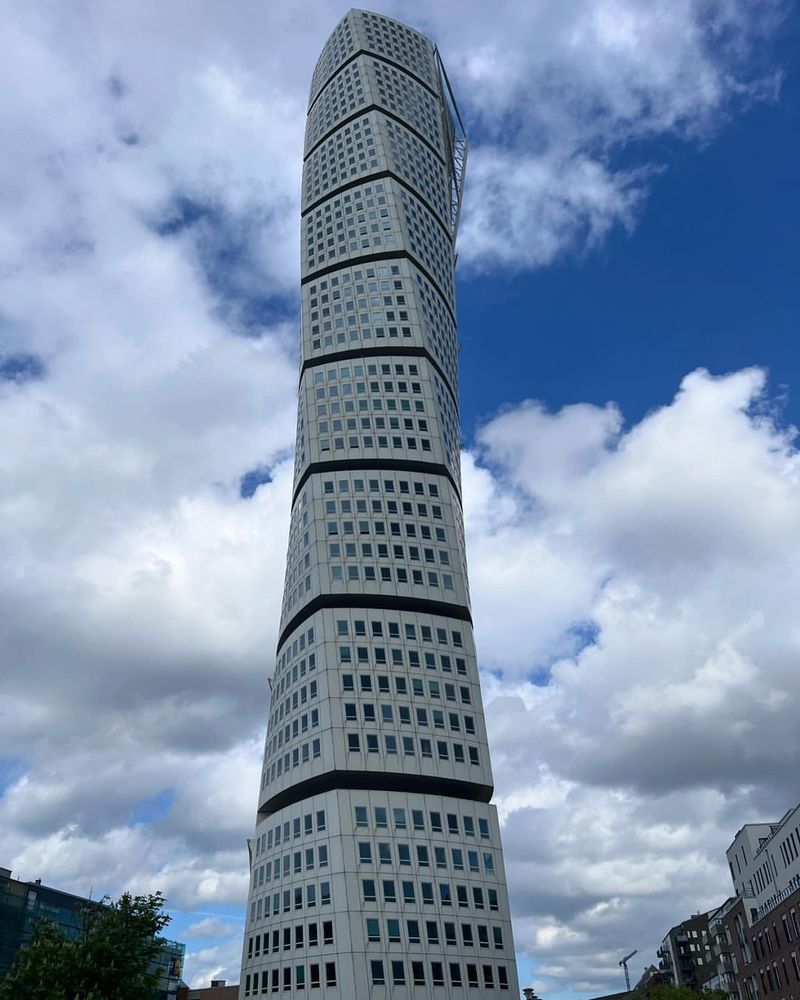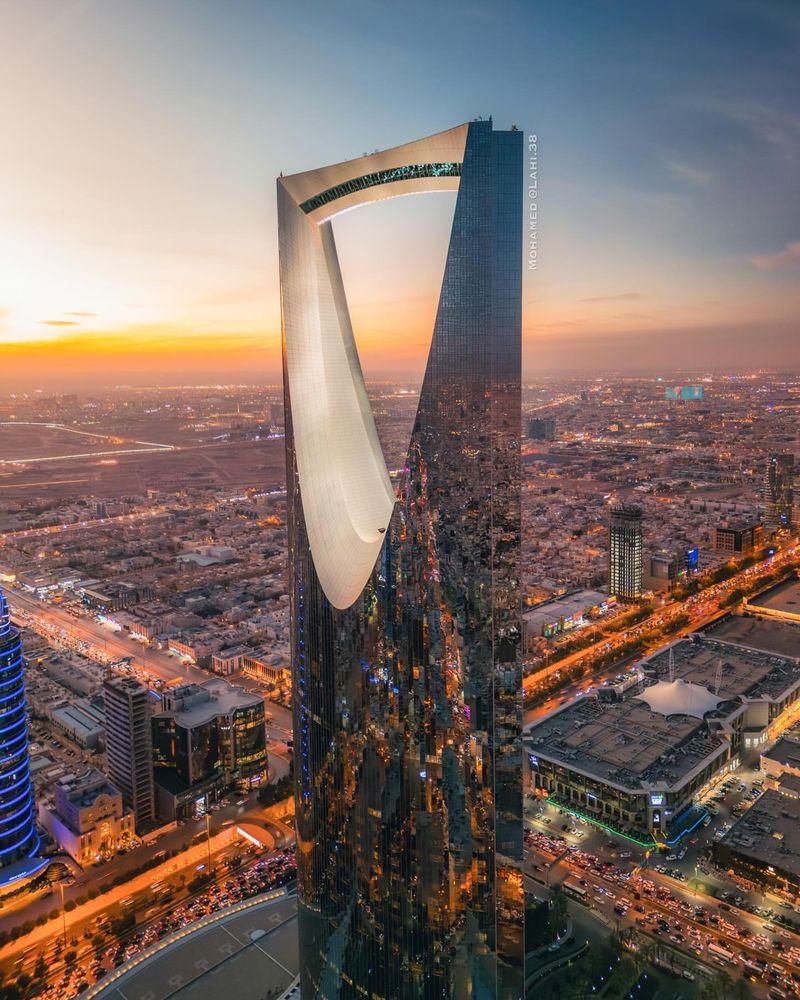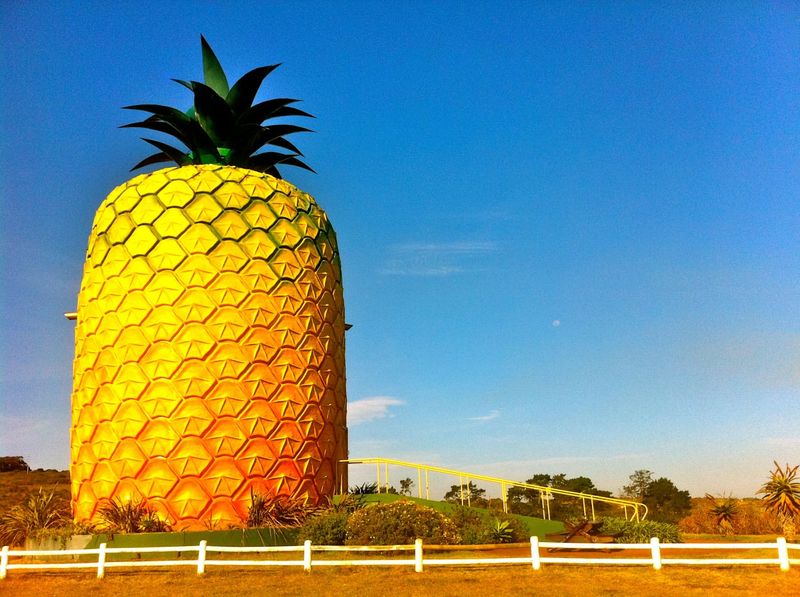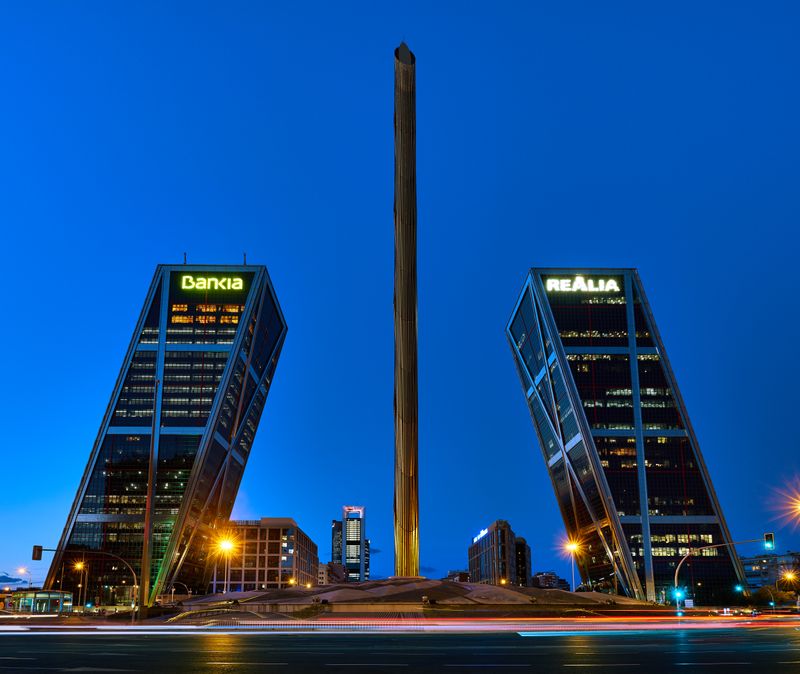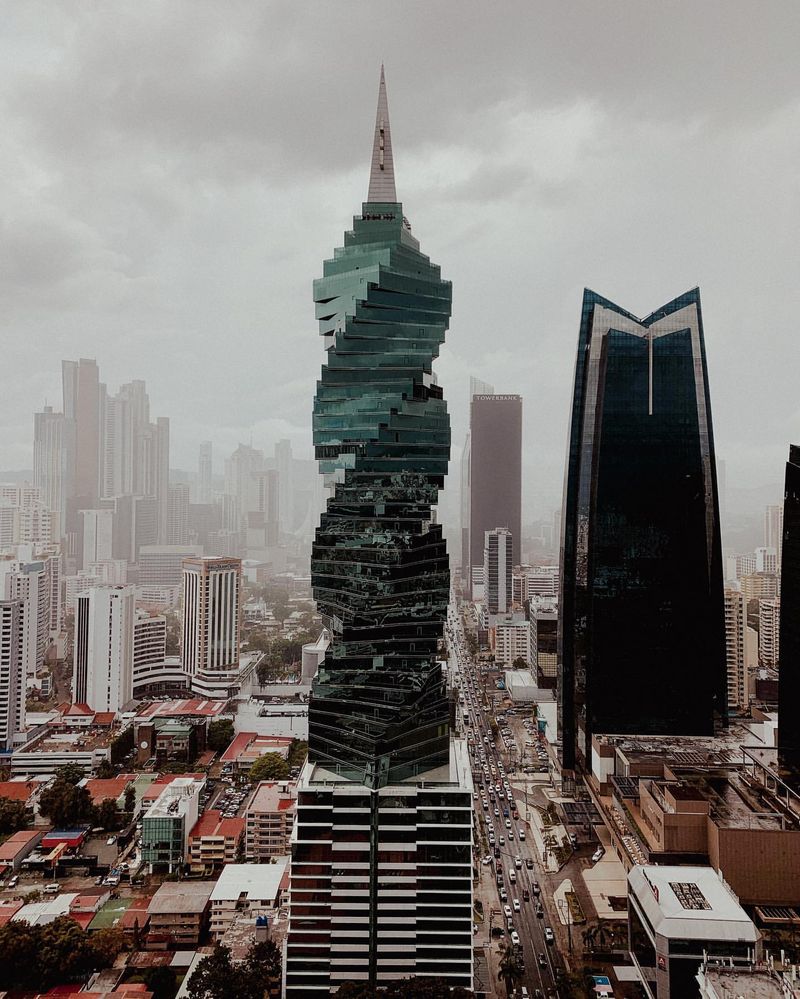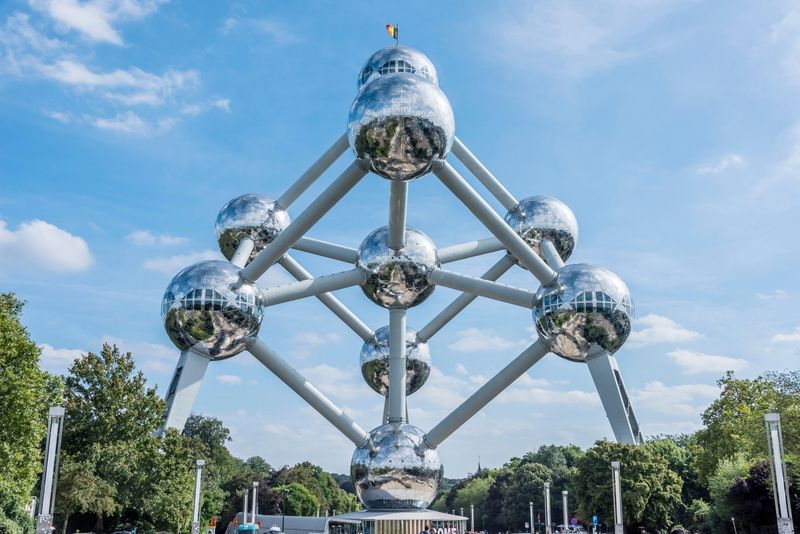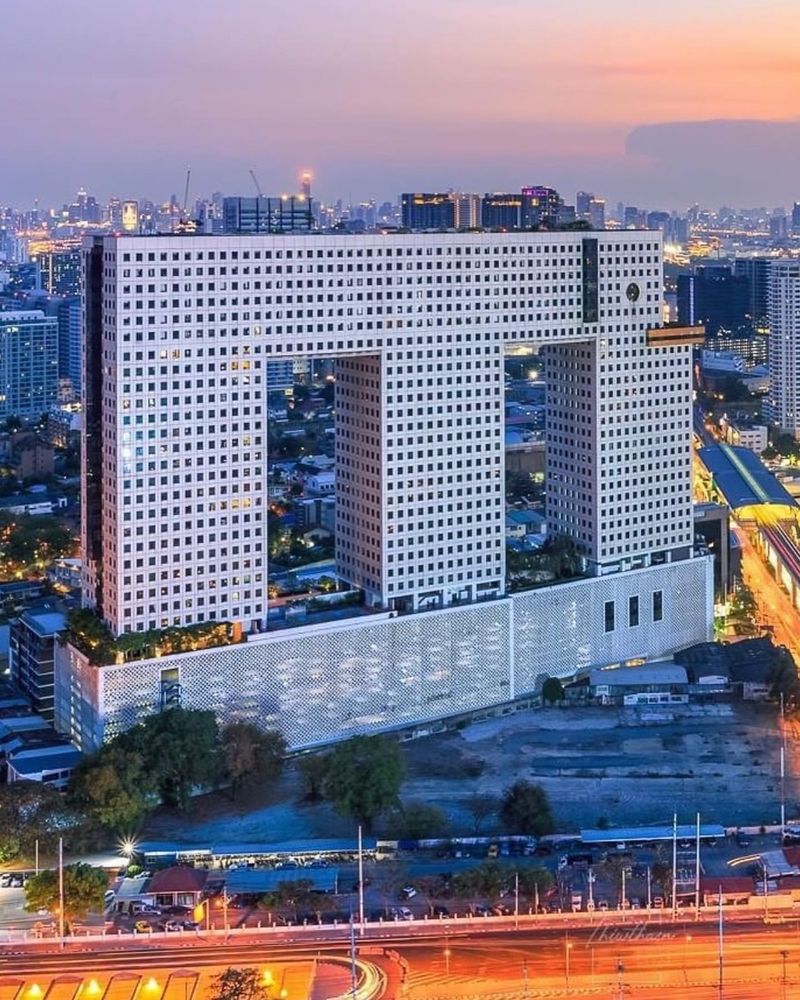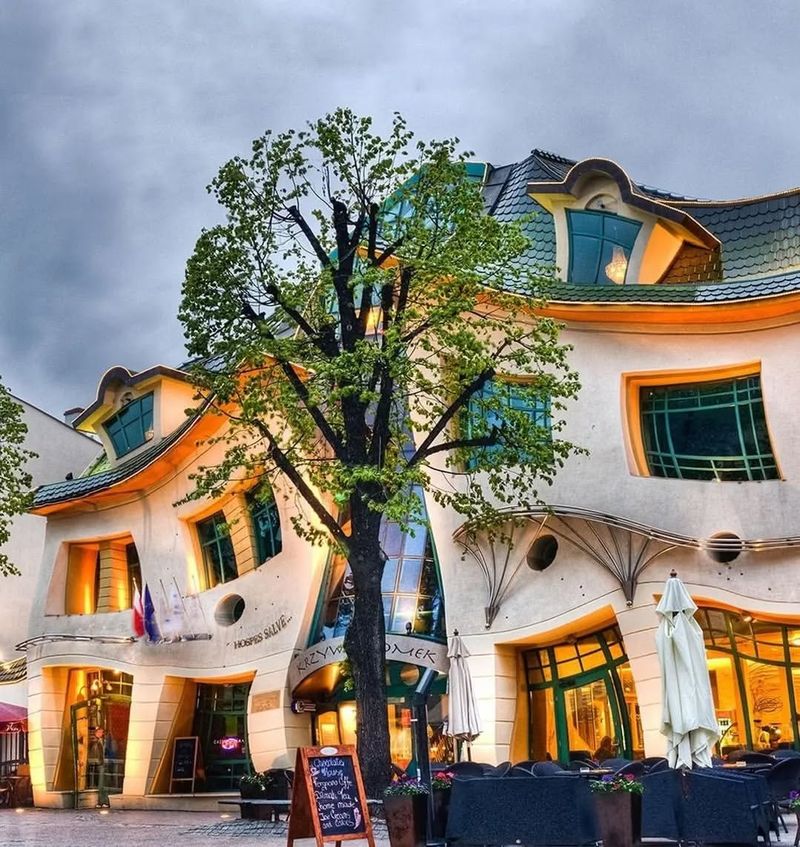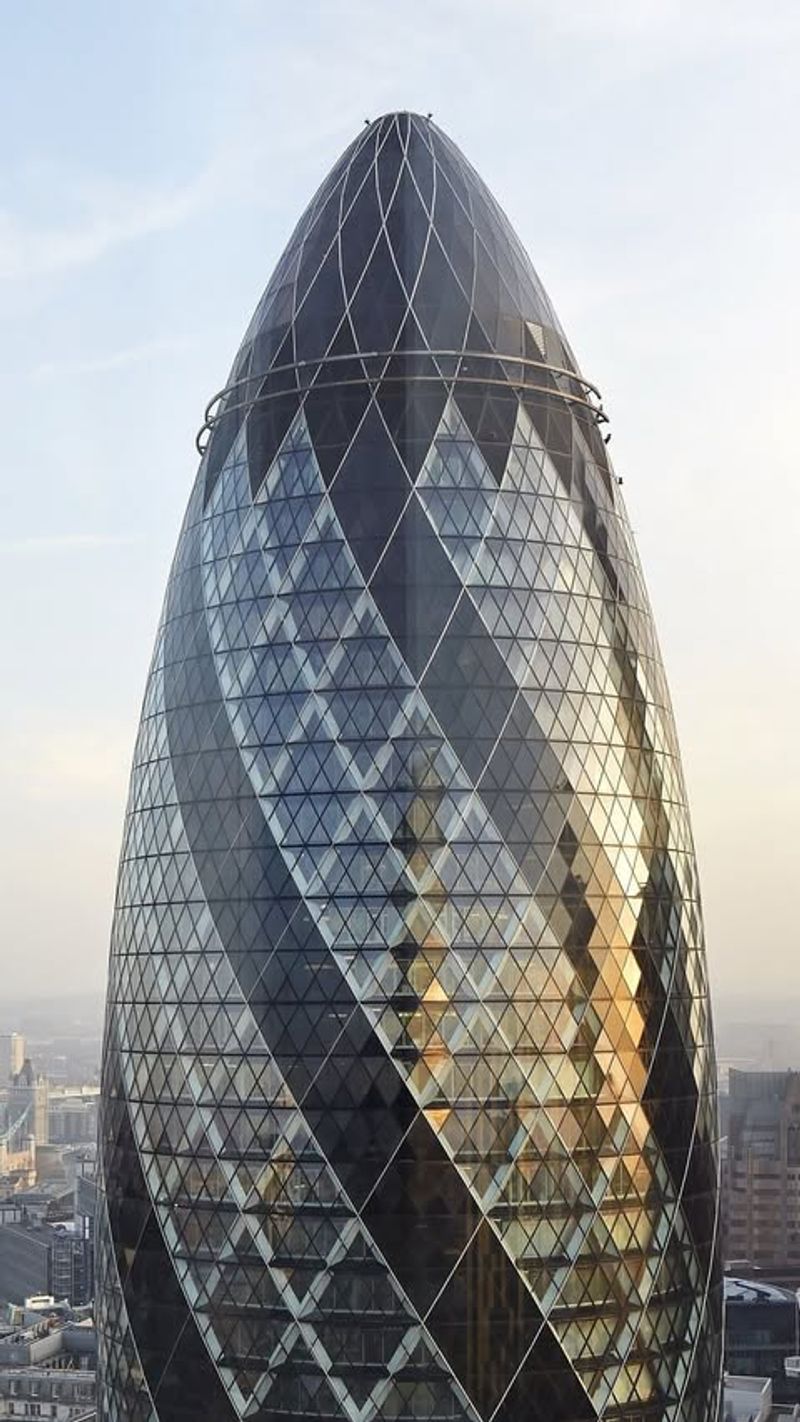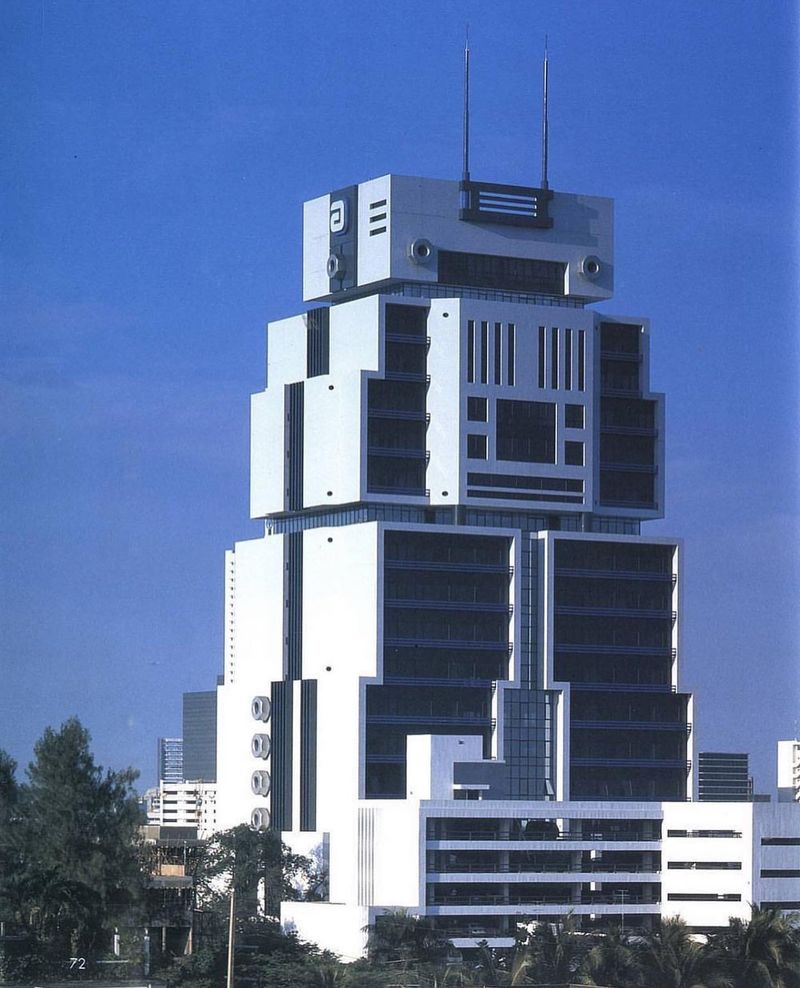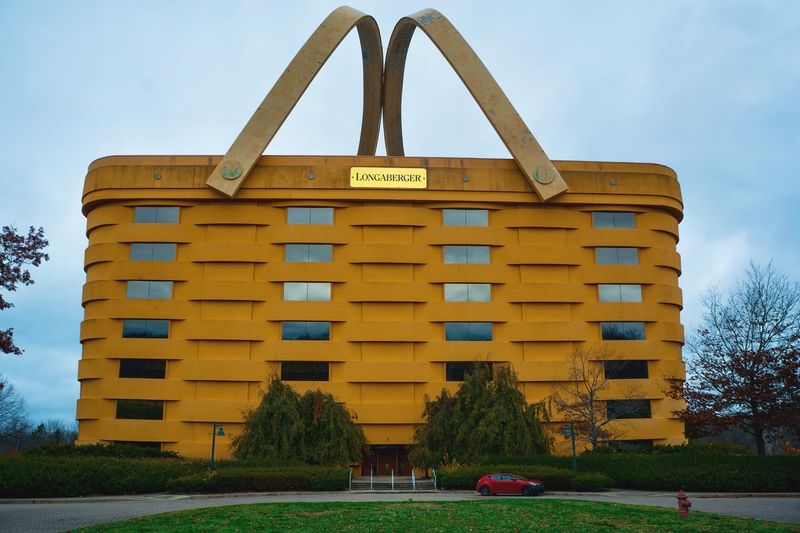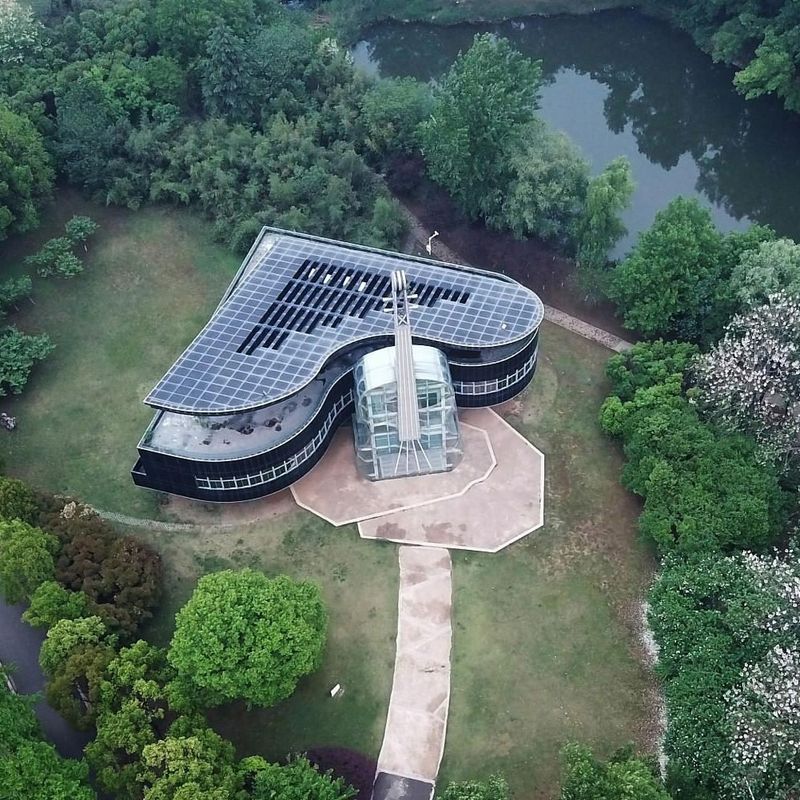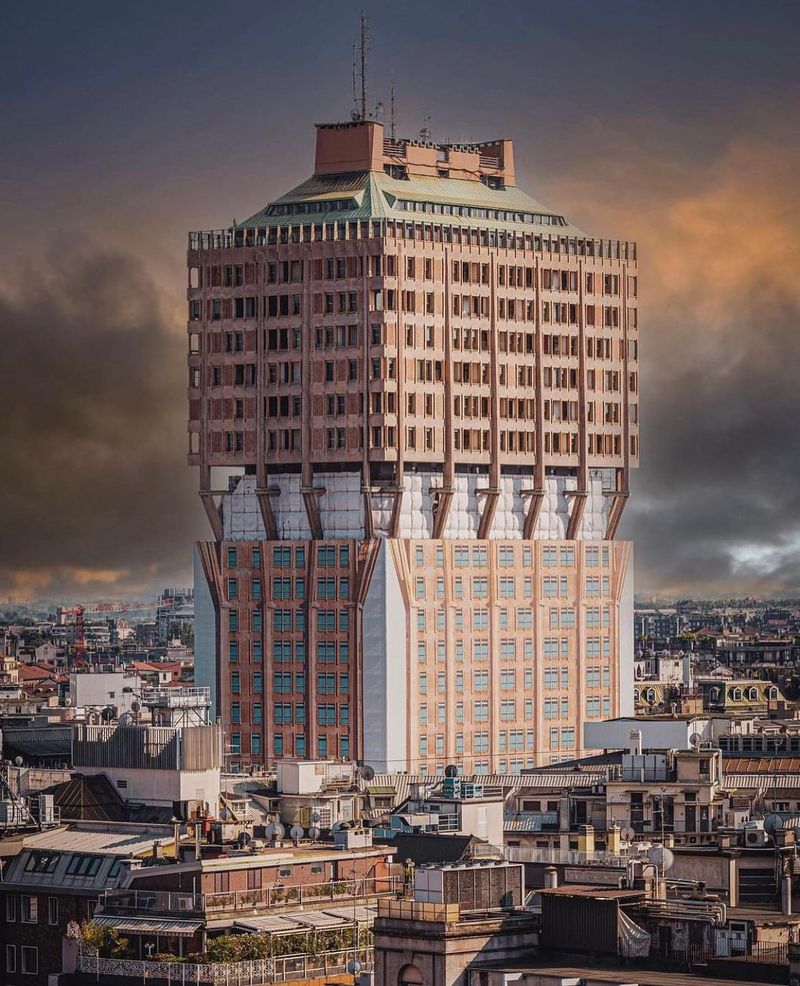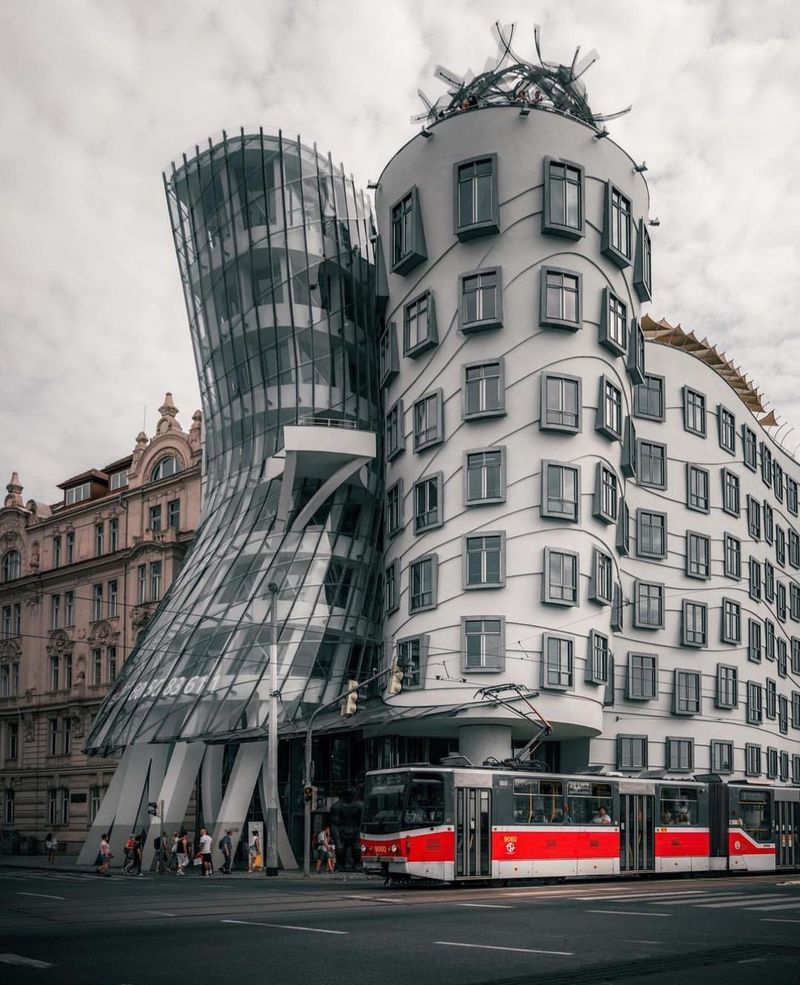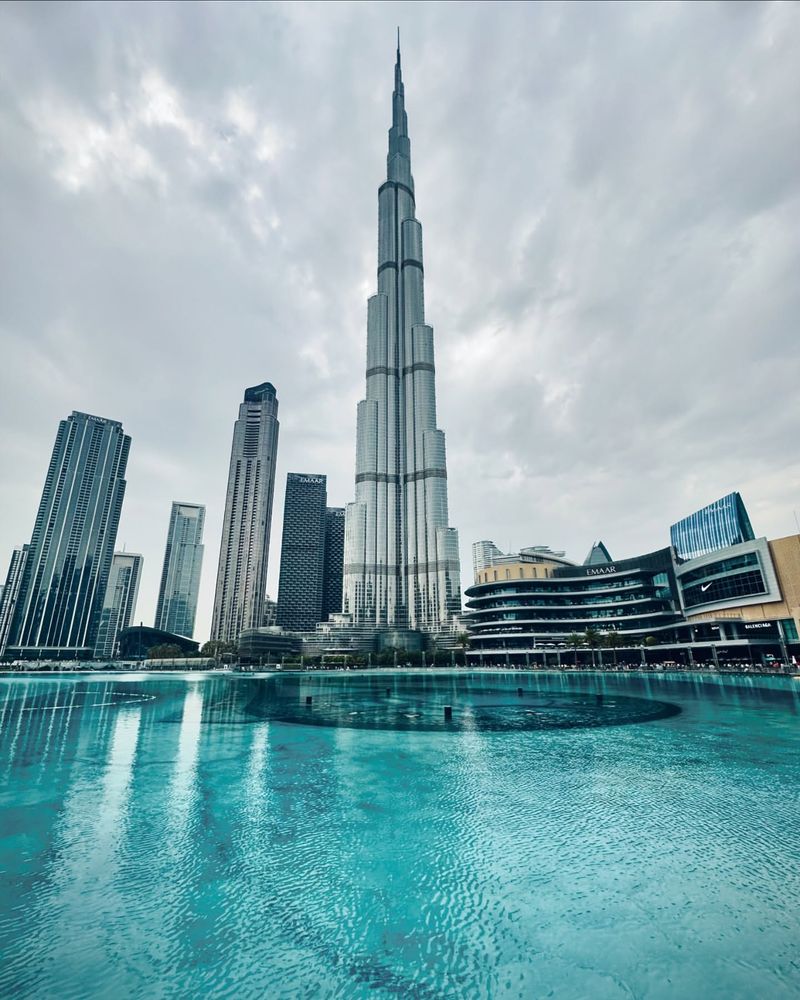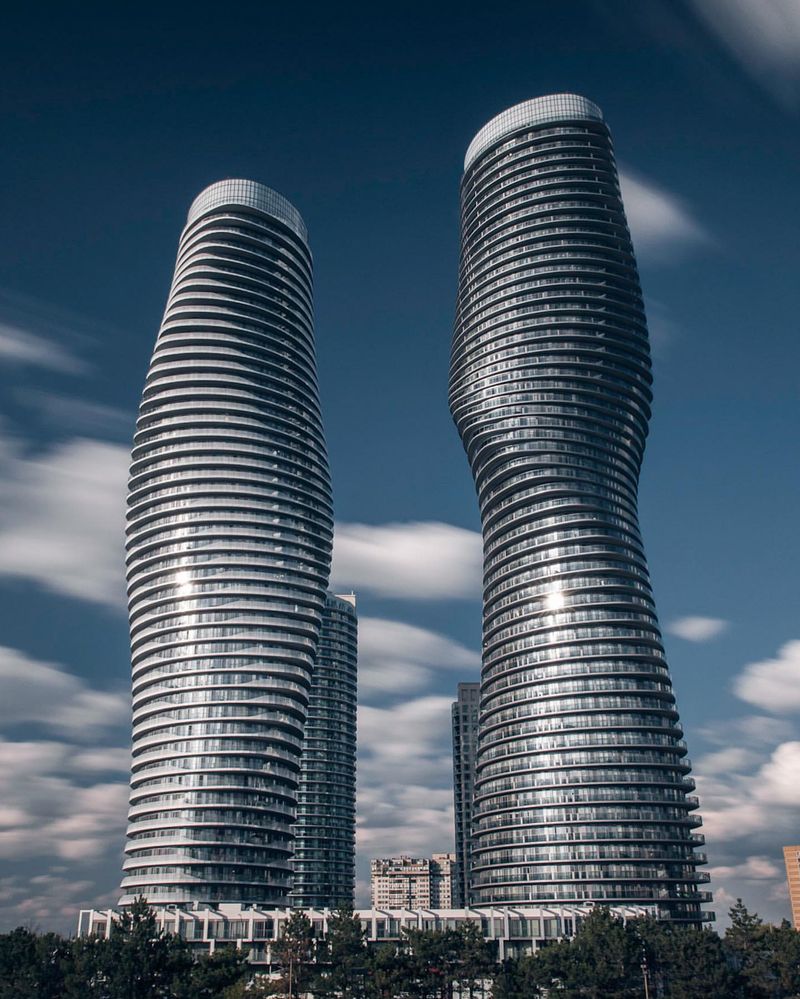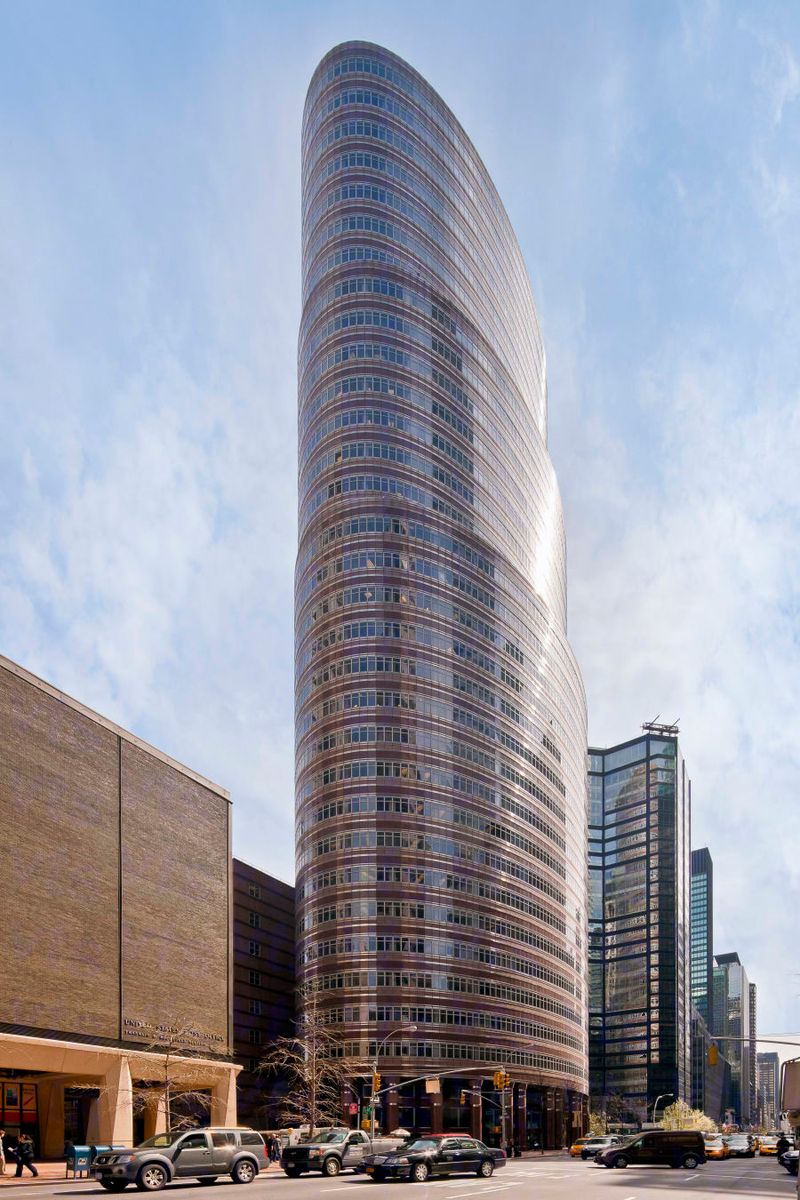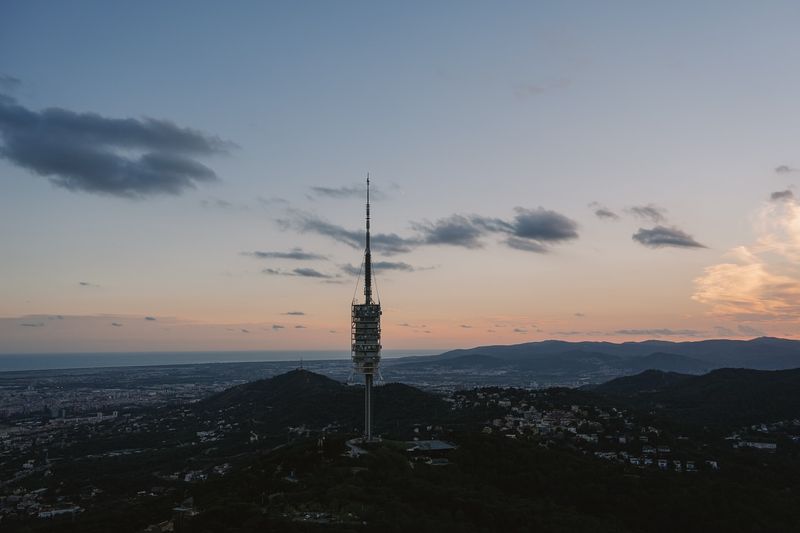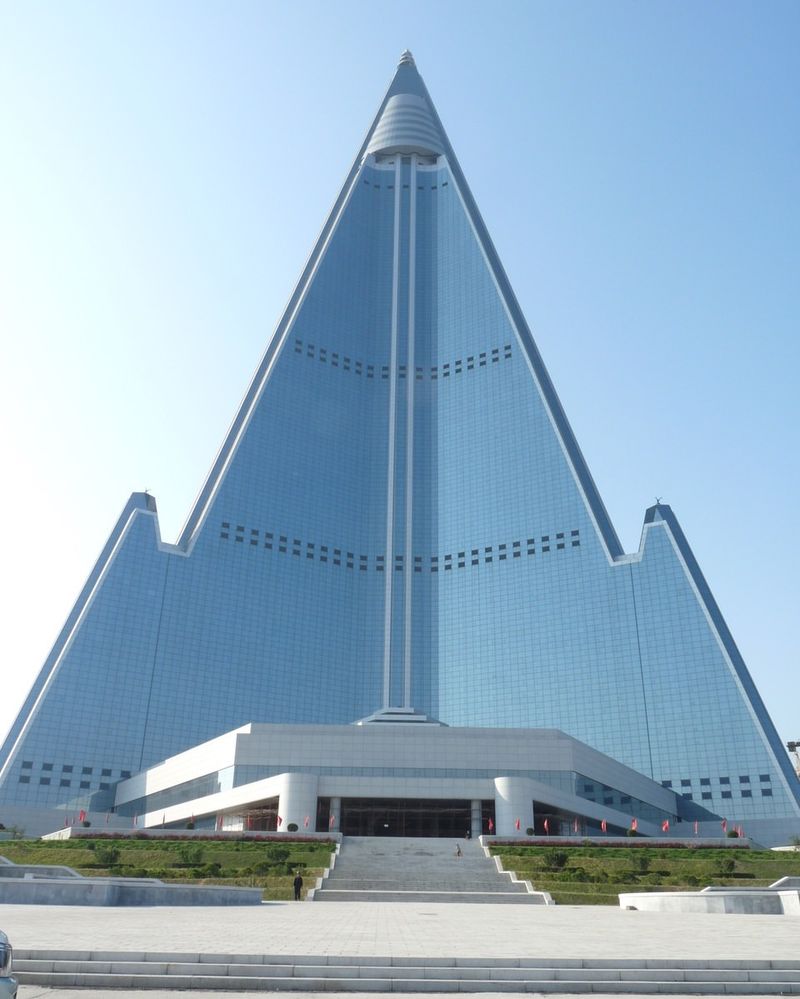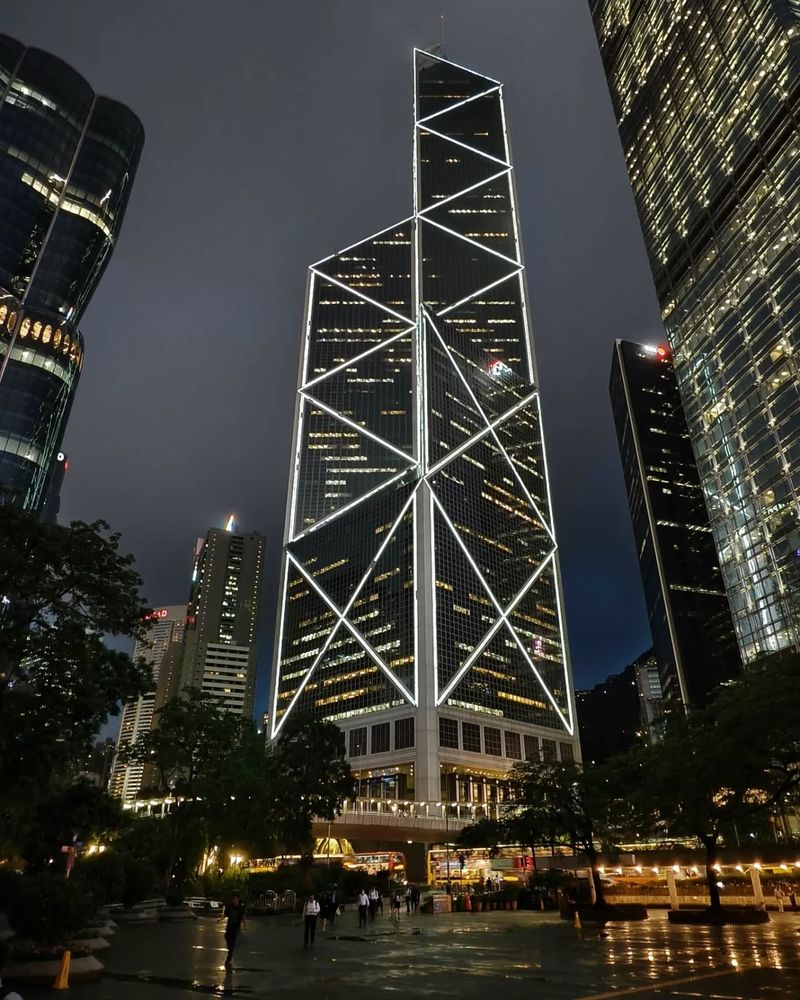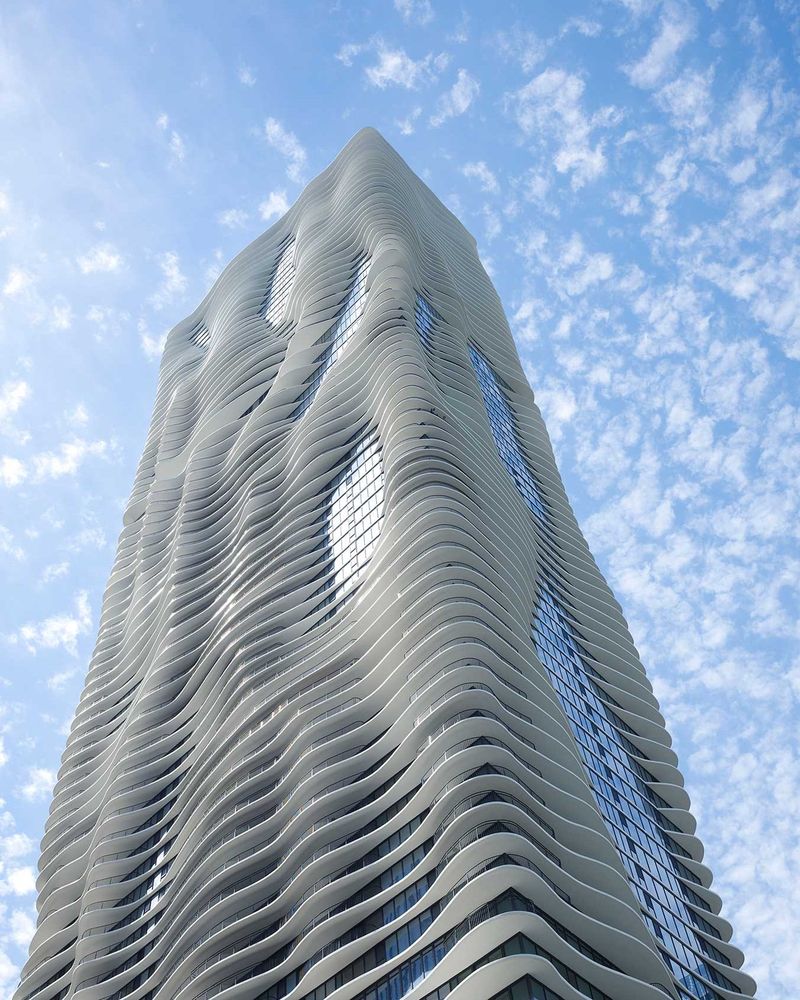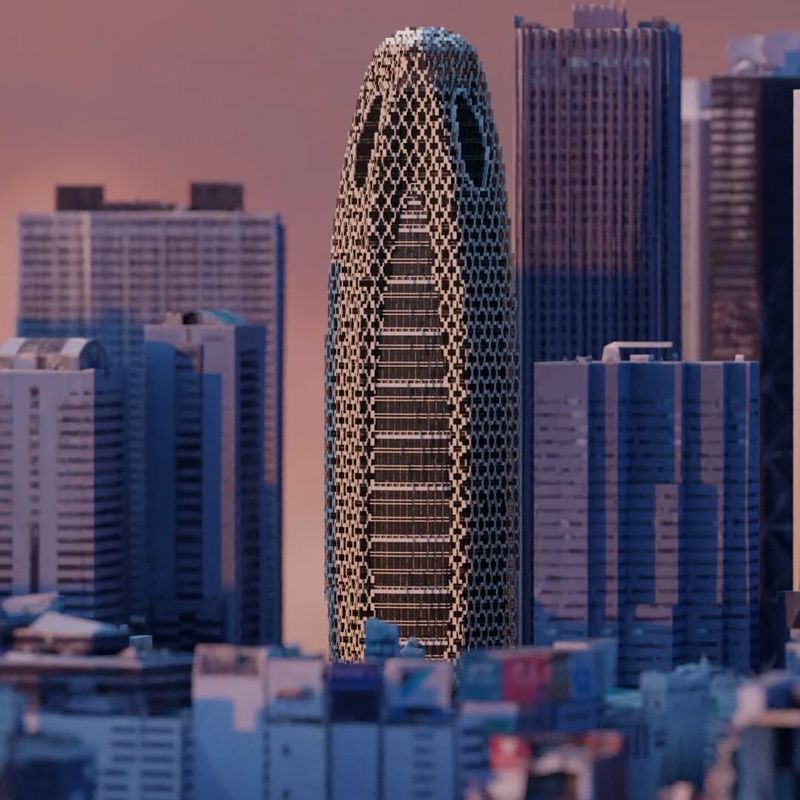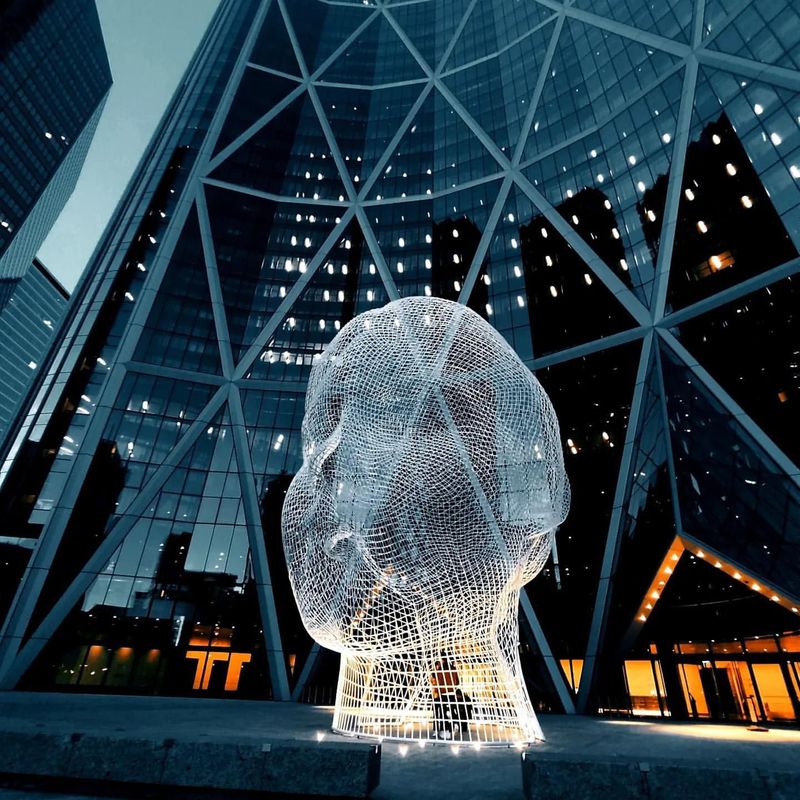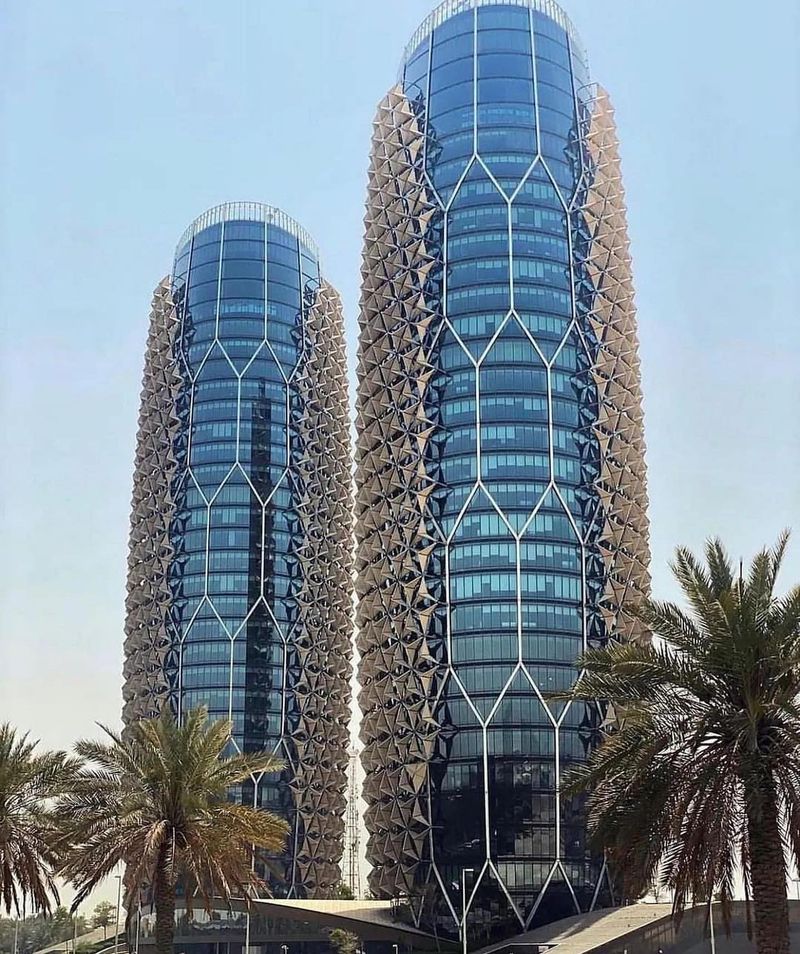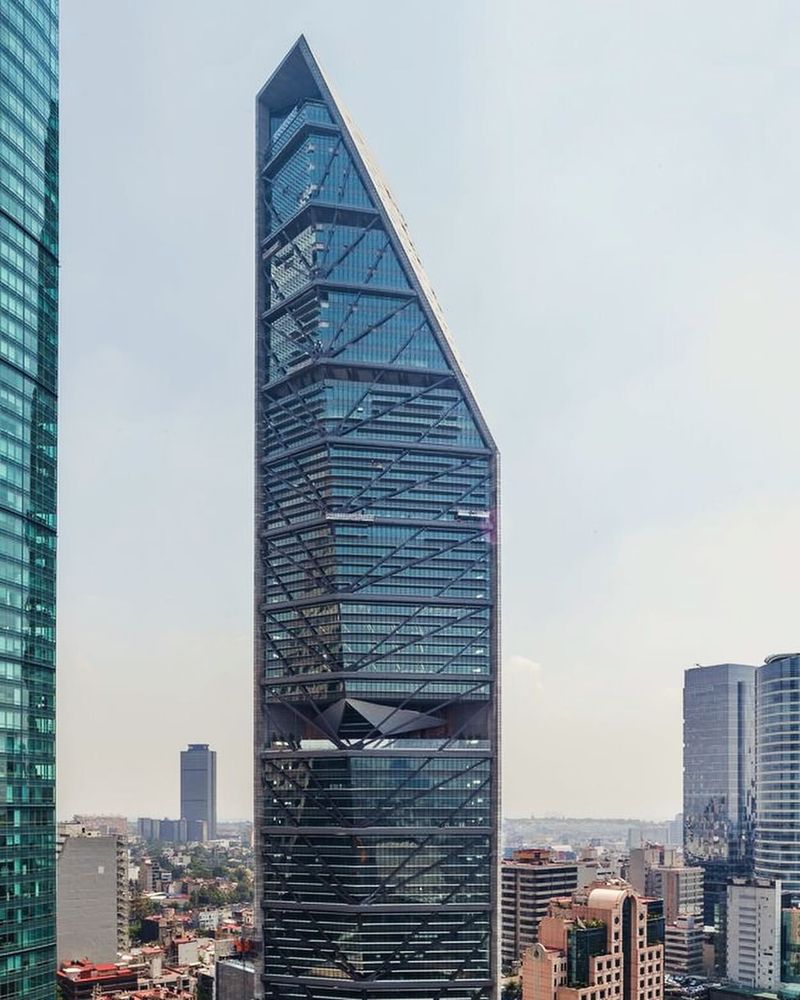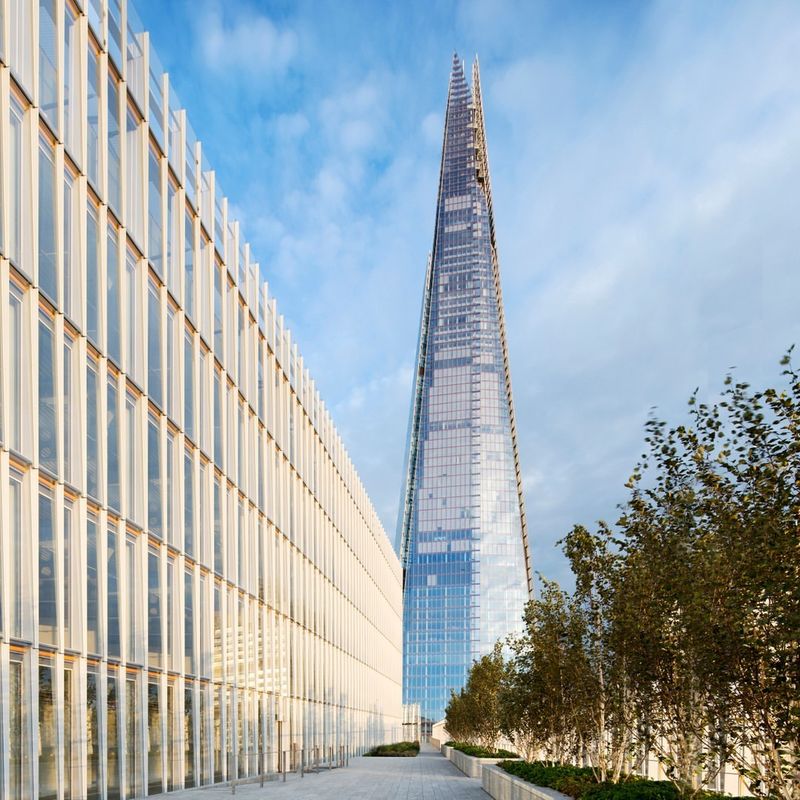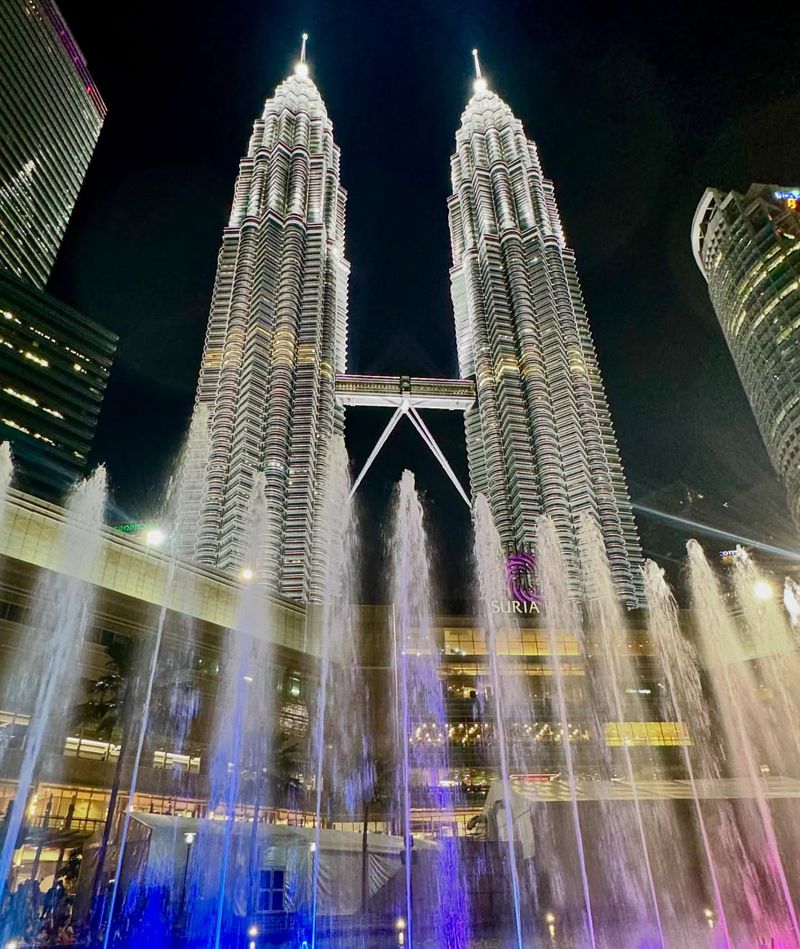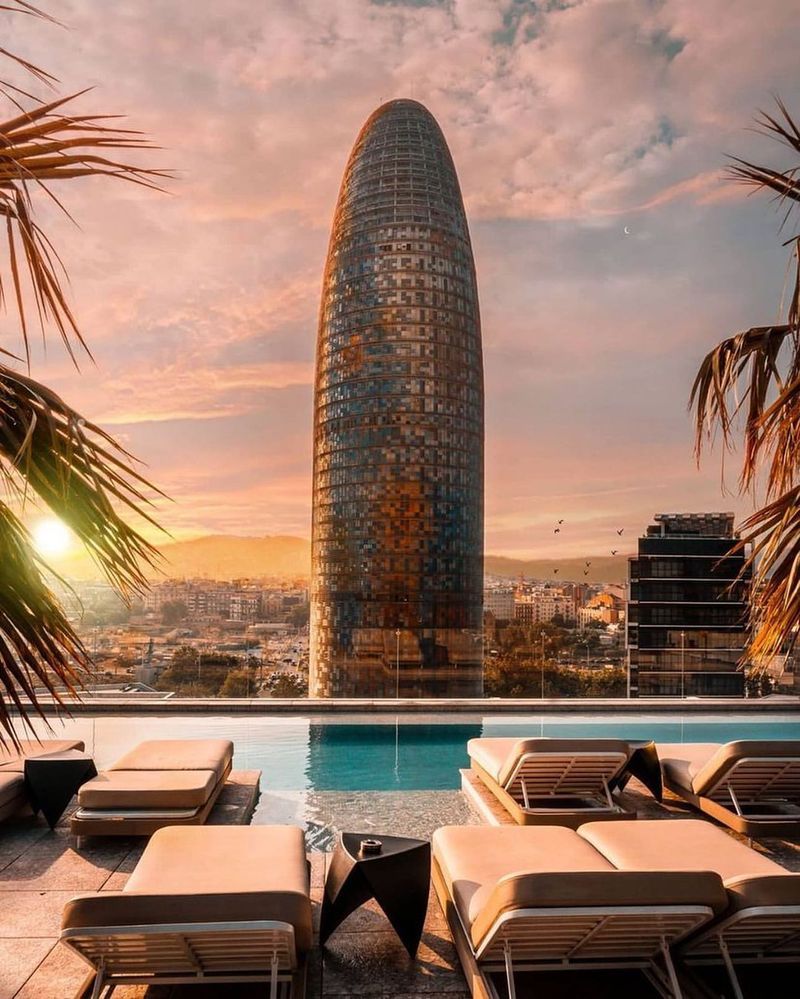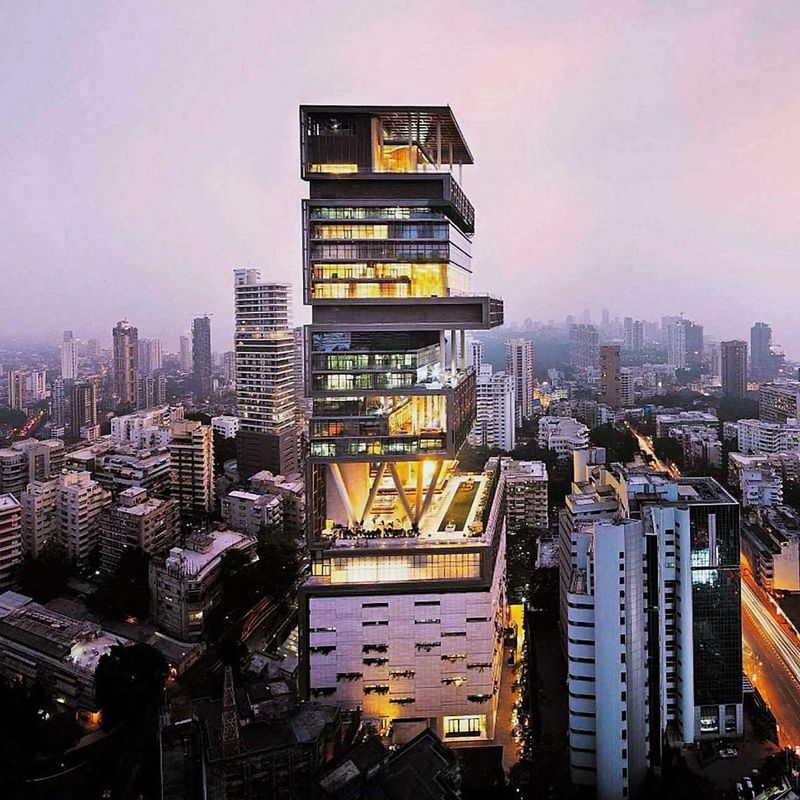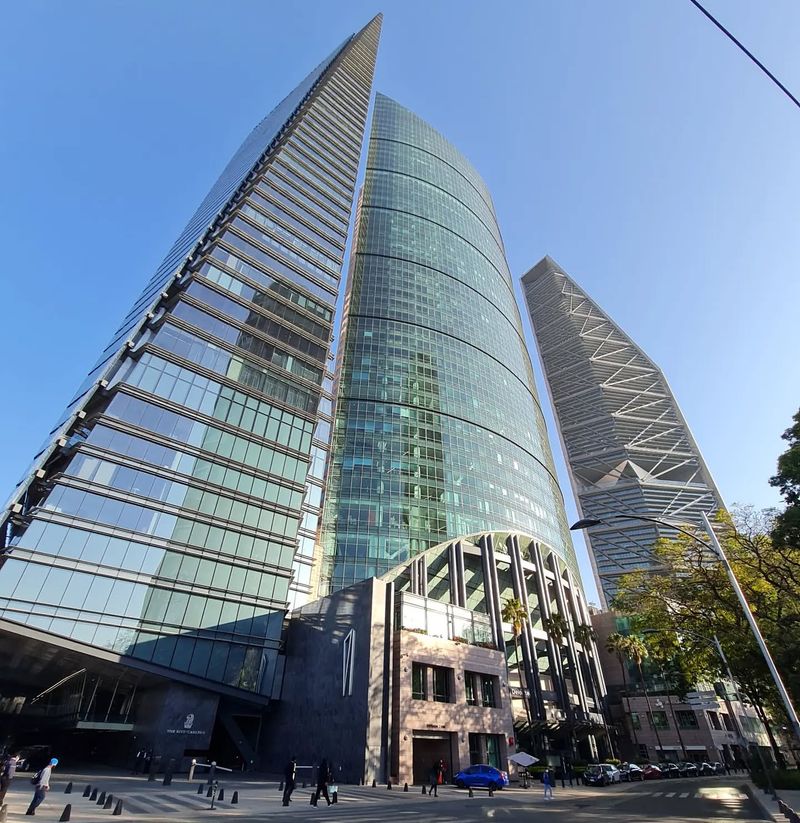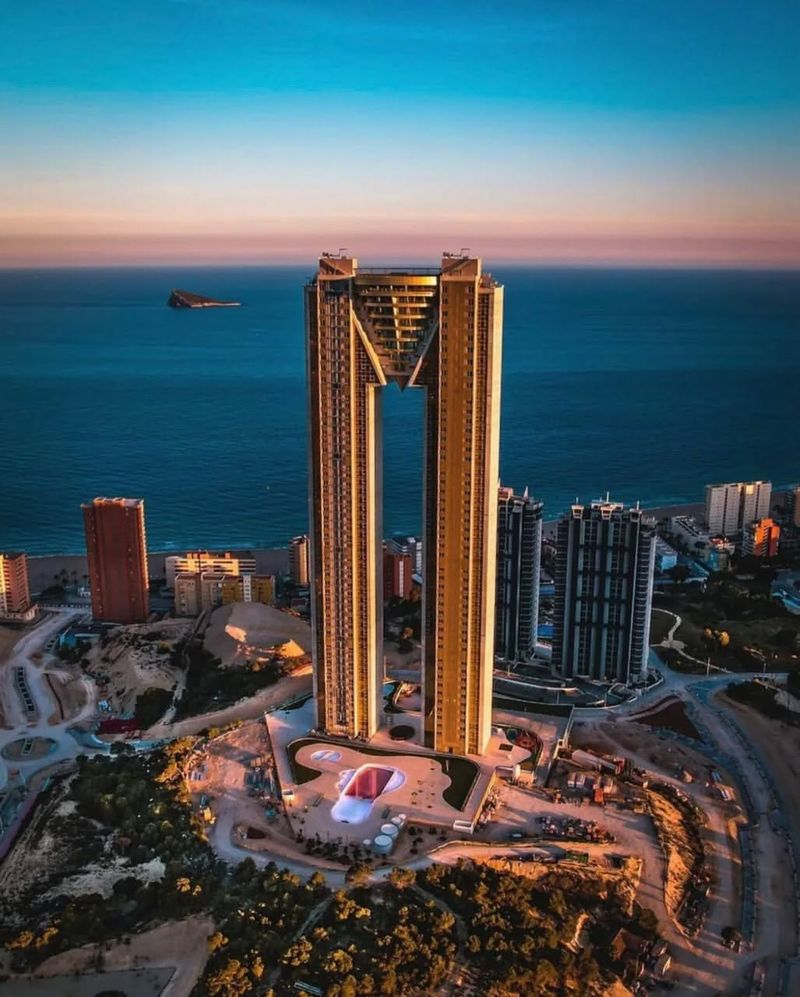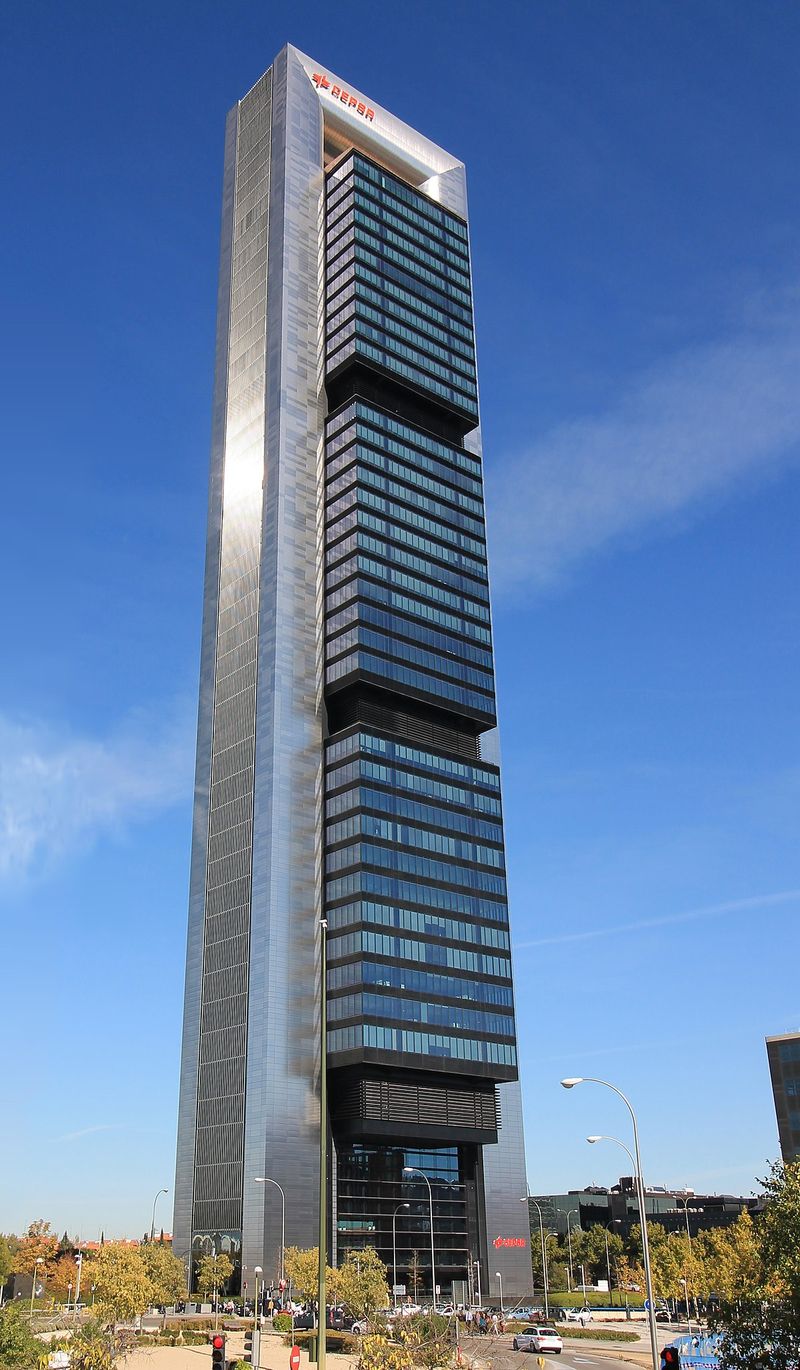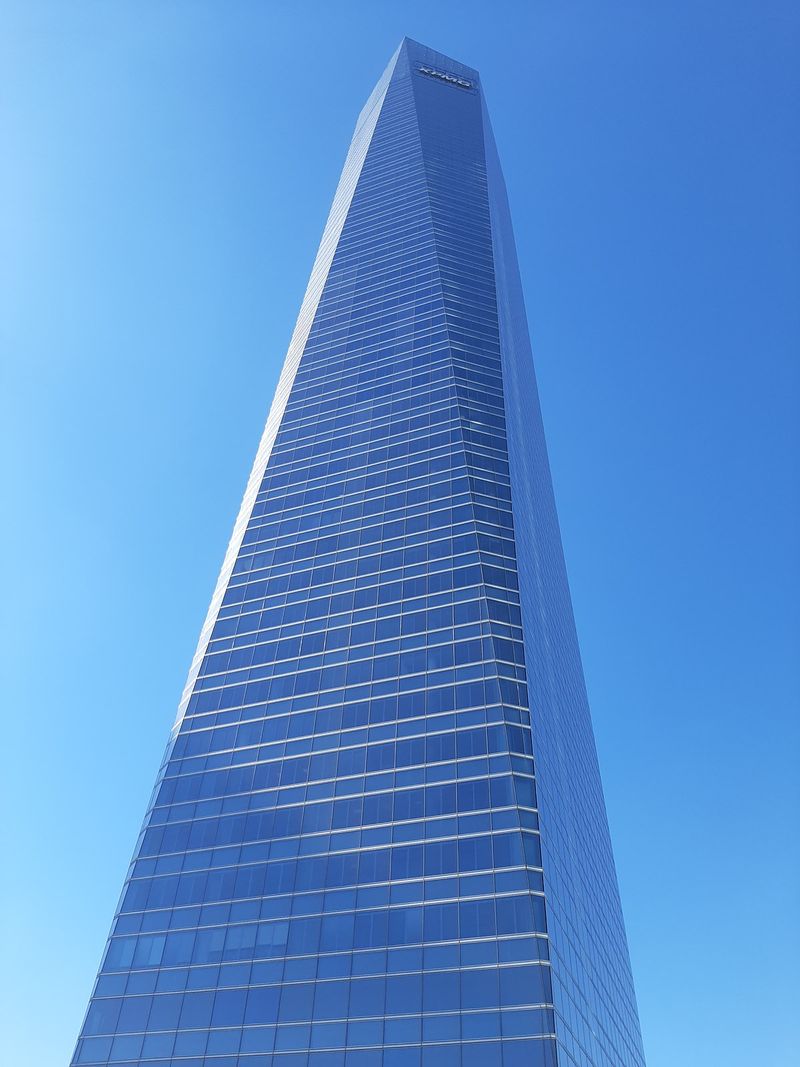Skyscrapers are the towering giants of our urban jungles, but not all of them conform to the sleek, straight-edged designs we often see.
Around the world, architects have pushed the boundaries of creativity and engineering. From twisting towers to buildings that resemble stacked coins, these structures capture imagination and defy convention.
Explore the marvels of modern architecture as we dive into a list of 36 of the weirdest skyscrapers across the globe, each one a testament to human ingenuity and artistic expression.
1. CCTV Headquarters, China
The CCTV Headquarters in Beijing, China, is a striking departure from traditional skyscraper design. Resembling a giant loop, it challenges the norms with its daring angular structure.
Designed by architect Rem Koolhaas, this building is a marvel of modern engineering. Its unique form, often dubbed the ‘big pants,’ offers a fresh perspective on what a skyscraper can be, making it one of the most recognizable landmarks in the city.
2. The Torre Glòries, Spain
Barcelona’s Torre Glòries, formerly known as Torre Agbar, is an iconic bullet-shaped skyscraper. Designed by architect Jean Nouvel, its smooth, curved form and vibrant facade reflect the city’s dynamic spirit.
This shimmering structure is clad in aluminum and glass panels, capturing and refracting light in a dazzling display. The building’s innovative design and striking presence make it a standout piece in the city’s modern architectural collection.
3. Marina Bay Sands, Singapore
Marina Bay Sands in Singapore is a marvel of architectural innovation. Consisting of three soaring towers connected by a sky park, it resembles a futuristic ship floating in the sky.
This iconic structure is a key feature of Singapore’s skyline. Designed by architect Moshe Safdie, the complex includes a hotel, casino, and an infinity pool that offers breathtaking views of the city. It’s a testament to modern design and luxury.
4. Turning Torso, Sweden
In Malmö, Sweden, the Turning Torso stands as a bold architectural statement. Designed by Santiago Calatrava, this spiraling skyscraper twists a full 90 degrees from base to top. Its unique silhouette dominates the city’s skyline, symbolizing innovation and modernity.
The building’s design is inspired by a twisting human body, reflecting both artistic vision and engineering prowess. It’s a must-see landmark for visitors to the region.
5. Kingdom Centre, Saudi Arabia
Riyadh’s Kingdom Centre is a masterpiece of minimalist design. The skyscraper’s iconic feature is its distinctive circular cut-out at the top, creating an eye-catching silhouette. Designed by Ellerbe Becket and Omrania, this structure exemplifies modern elegance and sophistication.
Its reflective blue glass facade shimmers under the desert sun, making it a striking feature of the city’s skyline. The building houses a shopping mall, hotel, and offices.
6. The Big Pineapple Building, Australia
In Nambour, Queensland, Australia, the Big Pineapple Building stands as a playful architectural wonder. Shaped like a giant pineapple, this building captures the region’s agricultural heritage. I
ts uniquely whimsical design attracts tourists from far and wide. The structure blends function with fun, housing a variety of retail and entertainment spaces. This iconic building is a symbol of the area’s commitment to innovation and creativity.
7. The Gate of Europe, Spain
Madrid’s Gate of Europe towers, also known as KIO Towers, are a pair of leaning skyscrapers that defy conventional architecture. Designed by Philip Johnson and John Burgee, these structures tilt towards each other at a striking angle.
Their bold, futuristic design is a standout feature in Madrid’s skyline. The towers symbolize the city’s forward-thinking spirit and are a testament to the architects’ daring vision and engineering expertise.
8. F&F Tower, Panama
The F&F Tower in Panama City is a dazzling example of modern architecture. Its spiraling form twists elegantly into the sky, creating a dynamic presence in the city’s skyline. Designed by Pinzón Lozano & Asociados, this glass-clad skyscraper reflects the vibrant energy of Panama.
Its innovative shape and sleek design make it a favorite among architecture enthusiasts. The building houses a variety of commercial spaces, contributing to the city’s growth.
9. The Atomium, Belgium
Brussels is home to the Atomium, a remarkable structure that defies traditional architectural norms. Designed by André Waterkeyn, it resembles an iron crystal magnified 165 billion times.
The Atomium’s unique design and stainless steel spheres create a futuristic appearance, capturing the imagination of visitors. Originally built for the 1958 Brussels World’s Fair, this iconic building continues to be a symbol of innovation and progress, attracting tourists from around the world.
10. The Elephant Building, Thailand
Bangkok’s Elephant Building is a unique architectural icon. Shaped like a giant elephant, this building complex is both whimsical and functional. Its distinctive form is a tribute to Thailand’s cultural heritage.
The structure includes residential, office, and retail spaces, making it a bustling hub of activity. The Elephant Building’s playful design and cultural significance make it a beloved landmark in Bangkok’s skyline, attracting both locals and tourists.
11. The Crooked House, Poland
In the heart of Sopot, Poland, stands The Crooked House, a whimsical structure that seems to have stepped out of a fairy tale. Its wavy lines and irregular shape distort perception, creating an almost cartoonish facade.
This architectural oddity was inspired by the illustrations of Jan Marcin Szancer, a renowned Polish children’s book author. Walking past this building feels like stepping into a dream where reality bends and twists, captivating both locals and tourists alike.
12. The Gherkin, UK
Officially known as 30 St Mary Axe, The Gherkin is a standout in London’s skyline. Its sleek, bullet-shaped design and spiraling glass facade set it apart from its historic surroundings.
Designed by Norman Foster, this skyscraper combines sustainability with style, utilizing energy-efficient technology. The Gherkin’s innovative design has garnered global acclaim and has become a symbol of modern London, blending seamlessly with the city’s rich architectural heritage.
13. The Robot Building, Thailand
In Bangkok’s bustling business district, the Robot Building stands as a playful architectural marvel. Designed by Sumet Jumsai, this building resembles a giant robot, complete with antennae and cogwheels.
Its distinctive design reflects the technological advancements in the banking industry. The Robot Building’s unique appearance and functional design have made it an iconic structure in the city, symbolizing innovation and creativity in architecture.
14. The Basket Building, USA
The Basket Building in Newark, Ohio, is a charming architectural oddity. Designed by NBBJ and Korda Nemeth Engineering, this building is shaped like a giant woven basket, complete with handles.
Originally built as the headquarters for the Longaberger Basket Company, it stands as a tribute to craftsmanship and creativity. The Basket Building’s whimsical design attracts visitors and has become a beloved local landmark, showcasing the community’s unique identity.
15. The Piano House, China
In Huainan, China, the Piano House is a harmonious blend of music and architecture. Shaped like a giant piano and violin, this building serves as a music school and concert hall. Its transparent glass facade allows natural light to flood the interior, creating a bright and inspiring space.
The Piano House’s artistic design and functional purpose make it a captivating landmark, celebrating the connection between music and architecture.
16. The Torre Velasca, Italy
Milan’s Torre Velasca is a striking example of mid-century modern architecture. Designed by BBPR, this tower features a distinctive mushroom-like shape, with a wider top section supported by slender columns. Its unconventional design contrasts sharply with the traditional architecture of Milan.
The Torre Velasca’s bold silhouette and historical significance make it a noteworthy landmark, representing the city’s post-war architectural transformation and innovation.
17. The Dancing House, Czech Republic
Located in Prague, the Dancing House is a stunning collaboration between architects Frank Gehry and Vlado Milunić. Its dynamic, flowing design mimics a pair of dancers, earning it the nickname ‘Fred and Ginger.’
This synergy of movement and stability stands out amidst the traditional Baroque and Gothic architecture of the city. The building’s unique appearance has made it a beloved icon of Prague’s architectural landscape.
18. Burj Khalifa, UAE
The Burj Khalifa in Dubai stands as the tallest skyscraper in the world. Its sleek, tapering design symbolizes the pinnacle of modern engineering and luxury. Designed by Adrian Smith, this architectural marvel reaches a staggering height, offering breathtaking views from its observation decks.
The Burj Khalifa is a testament to Dubai’s ambition and innovation, serving as a global icon of architectural excellence and a major tourist attraction.
19. The Absolute World Towers, Canada
Mississauga, Canada, is home to the Absolute World Towers, affectionately known as the ‘Marilyn Monroe Towers.’ These twin skyscrapers feature a unique curvaceous design, twisting elegantly into the sky.
Designed by MAD Architects, their fluid form stands out amidst the city’s urban landscape. The towers’ innovative architecture has garnered international attention, making them a celebrated landmark and a symbol of modern design in Canada.
20. The Lipstick Building, USA
The Lipstick Building in New York City is a playful addition to the city’s skyline. Its cylindrical shape and red-tinted facade closely resemble a giant lipstick tube. Designed by Philip Johnson and John Burgee, this skyscraper is a testament to creativity and design innovation.
The Lipstick Building’s unique appearance and prime location in Midtown Manhattan make it a recognizable and beloved feature in the architectural tapestry of New York.
21. The Torre de Collserola, Spain
Rising above the hills of Barcelona, the Torre de Collserola is a remarkable telecommunications tower. Designed by architect Norman Foster, its slender, futuristic form is a striking addition to the landscape.
The tower’s innovative design and strategic location offer panoramic views of the city and beyond. As both a functional and aesthetic structure, the Torre de Collserola exemplifies the intersection of technology and modern architecture.
22. The Ryugyong Hotel, North Korea
The Ryugyong Hotel in Pyongyang is an imposing presence in the city’s skyline. This massive pyramid-shaped structure boasts a futuristic design and is one of North Korea’s most notable landmarks.
Originally intended to be the tallest hotel in the world, its construction was halted for many years, earning it the nickname ‘Hotel of Doom.’ Despite its troubled history, the Ryugyong Hotel remains a symbol of ambition and architectural boldness.
23. The Bank of China Tower, Hong Kong
Hong Kong’s Bank of China Tower is a masterpiece of modern architecture. Designed by I.M. Pei, its striking angular lines and geometric form create a captivating silhouette. The building’s reflective glass facade glistens under the city lights, making it a standout feature in Hong Kong’s skyline.
As one of the tallest buildings in the city, the Bank of China Tower represents both financial strength and architectural innovation, attracting admiration and attention.
24. The Aqua Tower, USA
Chicago’s Aqua Tower stands out with its flowing, wave-like balconies that give the impression of water cascading down its facade. Designed by Jeanne Gang, this innovative skyscraper merges aesthetics with functionality, offering stunning views from its uniquely shaped units.
The building’s design also promotes sustainability, making it a leader in green architecture. Aqua Tower’s mesmerizing appearance and eco-friendly features make it a celebrated landmark in Chicago’s skyline.
25. The Mode Gakuen Cocoon Tower, Japan
Tokyo’s Mode Gakuen Cocoon Tower is a visionary architectural feat. Its sleek, cocoon-like design symbolizes growth and transformation, housing three educational institutes. Designed by Tange Associates, the tower stands tall in Tokyo’s business district, blending innovation with purpose.
The building’s unique structure and educational function have made it a symbol of modernity and progress, attracting attention from both locals and visitors.
26. The Bow, Canada
Calgary’s The Bow is a stunning example of contemporary architecture. Its curvaceous, crescent-shaped design creates a dynamic presence in the city’s skyline. Designed by Foster + Partners, this glass-clad skyscraper is not only visually striking but also incorporates sustainable features.
The Bow’s innovative design and commitment to eco-friendly practices have made it a prominent landmark, reflecting Calgary’s modern spirit and architectural ambition.
27. The Al Bahar Towers, UAE
Abu Dhabi’s Al Bahar Towers are a testament to architectural innovation and sustainability. These twin cylindrical skyscrapers feature a dynamic facade that adapts to sunlight, providing shade and reducing energy consumption.
Designed by Aedas, the towers’ adaptive exoskeleton symbolizes the fusion of technology and design. The Al Bahar Towers’ unique approach to environmental challenges has earned them recognition and admiration, making them a standout feature in Abu Dhabi’s skyline.
28. The Torre Reforma, Mexico
Mexico City’s Torre Reforma is a bold architectural statement. Its sleek, triangular design and angular form set it apart from traditional skyscrapers. Designed by LBR&A Arquitectos, this innovative building incorporates sustainable features, emphasizing energy efficiency and environmental responsibility.
Torre Reforma’s modern design and commitment to sustainability make it a significant landmark, showcasing Mexico City’s embrace of cutting-edge architecture and green practices.
29. The Shard, UK
The Shard in London is a striking addition to the city’s iconic skyline. Its tall, sleek design tapers to a sharp point, creating a modern architectural marvel. Designed by Renzo Piano, this skyscraper offers panoramic views of London from its observation decks.
The Shard’s innovative design and towering presence make it a symbol of modernity and progress, attracting visitors from around the world. Its unique silhouette stands as a testament to London’s architectural evolution.
30. The Petronas Towers, Malaysia
Kuala Lumpur’s Petronas Towers are a magnificent example of modern architecture. These twin skyscrapers, designed by César Pelli, feature a sleek, futuristic design and are connected by a skybridge.
Standing tall as the tallest twin towers in the world, they symbolize Malaysia’s economic growth and architectural prowess. The Petronas Towers’ iconic design and status as a global landmark make them a source of national pride and a must-visit destination for travelers.
31. The Torre Agbar, Spain
Barcelona’s Torre Agbar, now known as Torre Glòries, is an iconic bullet-shaped skyscraper. Its smooth, curved form and vibrant facade reflect the city’s dynamic spirit.
Designed by architect Jean Nouvel, this shimmering structure is clad in aluminum and glass panels, capturing and refracting light in a dazzling display. The building’s innovative design and striking presence make it a standout piece in the city’s modern architectural collection.
32. The Antilia, India
Antilia, located in Mumbai, is a remarkable example of personalized architecture. This multi-tiered skyscraper stands as a vertical mansion, housing the residence of businessman Mukesh Ambani.
Designed by Perkins and Will, its lavish design includes several floors, each with unique features such as hanging gardens and health centers. Antilia’s opulence and distinctive architecture make it a standout in Mumbai’s skyline, symbolizing luxury and modern design.
33. The Torre Mayor, Mexico
Mexico City’s Torre Mayor is a testament to modern engineering and design. Standing as one of the tallest buildings in Latin America, its sleek, modern design showcases the city’s architectural ambition.
Designed by Zeidler Partnership Architects, the tower incorporates cutting-edge technology and safety features. Torre Mayor’s prominent presence in the skyline and its role as a hub for business and commerce make it a vital part of Mexico City’s urban landscape.
34. The Intempo Building, Spain
Benidorm’s Intempo Building is a bold architectural statement with its unique split design. Standing tall along the coastline, it features two parallel towers connected by a central structure. Designed by Pérez-Guerras Arquitectos & Ingenieros, its striking form dominates the city’s skyline.
Intempo’s innovative design and prime coastal location make it a landmark in Benidorm, representing the city’s modern spirit and architectural vision.
35. The Torre Cepsa, Spain
Madrid’s Torre Cepsa, formerly known as Torre Bankia, is a masterpiece of minimalist design. Its sleek, glass facade and clean lines create a modern silhouette that enhances the city’s skyline.
Designed by Norman Foster, the tower represents both elegance and functionality, housing corporate offices and commercial spaces. Torre Cepsa’s architectural excellence and prime location make it a significant landmark, embodying Madrid’s contemporary architectural narrative.
36. The Torre de Cristal, Spain
Madrid’s Torre de Cristal is a stunning example of modern architecture. Its sleek, crystalline design and shimmering glass facade create a dynamic presence in the city’s business district.
Designed by César Pelli, the tower stands as one of the tallest in Spain, offering breathtaking views of the capital. Torre de Cristal’s innovative design and striking appearance have made it a prominent feature in Madrid’s skyline, symbolizing the city’s architectural evolution.

